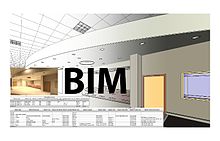
 Digital infrastructure, big data, and emerging markets are shaping building information modeling (BIM) and redefining the way engineers work today.
Digital infrastructure, big data, and emerging markets are shaping building information modeling (BIM) and redefining the way engineers work today.
The question is, how?
According to a McGraw-Hill Construction report, BIM adoption among AEC firms rose 54 percent within the last 5 years. Where BIM goes from here will be determined by the big three; digital infrastructure, big data, and emerging markets.
Taking a look at the Big Three
Digital infrastructure has accepted new methods of communication including email, mobile, and social communication mechanisms which have been proven to be quicker, more efficient, and provide the tools for greater productivity and reduced cost. Technology is also allowing us to store larger files for access anywhere anytime.
For example: The cloud is able to make unlimited computer power available as mechanical engineers are harnessing that power for heavy tasks like air and fluid flow and thermal-comfort simulation.
Digital infrastructure has evolved, and in the process, has strengthened big data which is affecting mechanical engineers and contractors. In turn, the demand for more data in building models will affect the responsibilities of mechanical designers, engineers, and contractors in the long run. The amount of detail and data needed in a BIM process is still up for debate.
Emerging markets is no exception to BIM growth – 55 percent of global construction will be in emerging markets within the next 7 years. With infrastructure networks constantly developing, emerging markets will have the ability to surpass other technology which will result in competition. This can happen by the emerging markets learning and avoiding growing pains as developed markets are able to iron out complications of BIM, could computing, and storage.
At the end, it is very difficult to predict how a shift will affect an industry. But that doesn’t mean we can’t for tale change within an industry based off informational data.
To read more, visit http://hpac.com/archive/future-bim.
















































